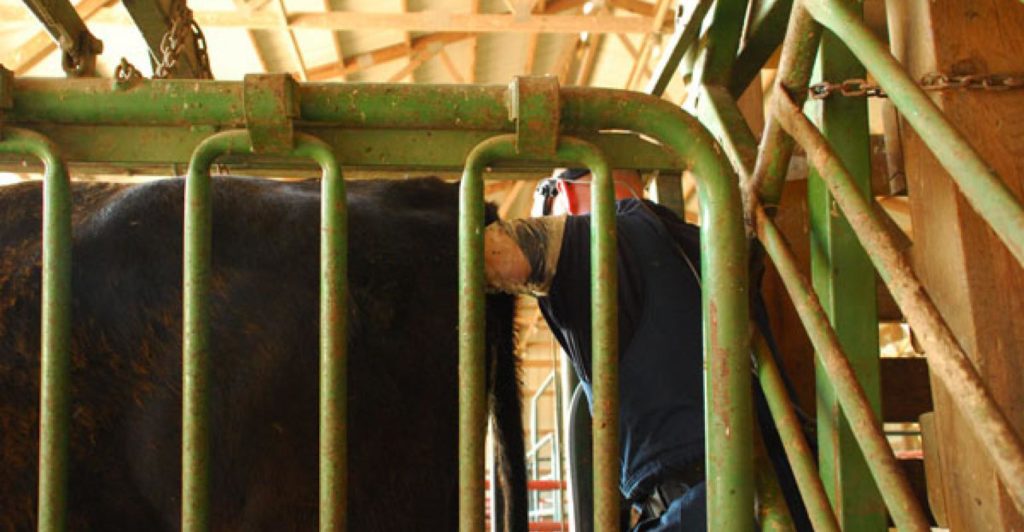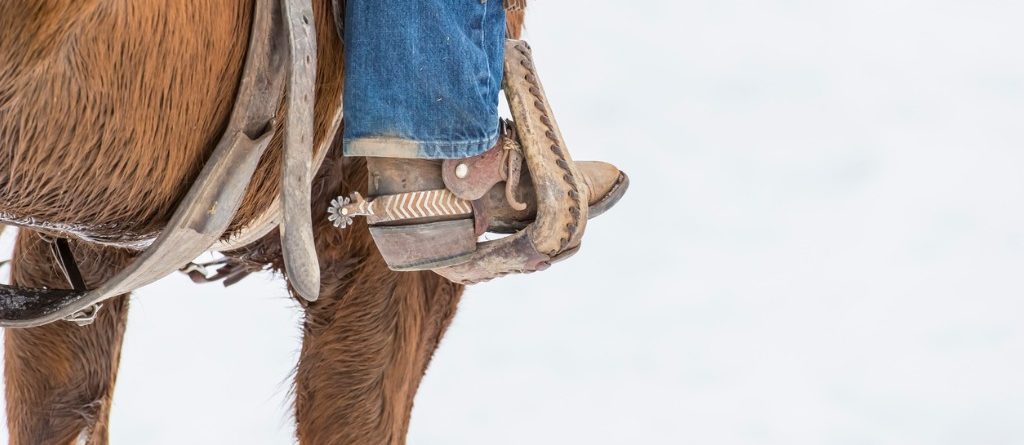Is it worth it to preg-check your cow? You might say no. But let’s take a look at the dollar amount of what skipping that vet call might be and you might change your tune.
With the majority of North American beef herds calving in the later winter and spring, fall is the time for pregnancy-checking cows. Pop quiz: What percentage of beef herds in the U.S. use pregnancy checking? 95%, 75%, 50%? … Nope, it is 20.2%. Are you surprised? I was.
When asked why producers do not pregnancy-check, the most common reason was lack of labor and time, and second was cost. I am going to tie those two together.
Let’s assume a producer has a 100-cow herd that averages 93% pregnancy rate. We will charge $6 per cow for the service (veterinarian and owner labor) and add a $50 trip charge. The total cost to the herd is $650.
If hay is $120 per ton and the cows consume 35 pounds per day and waste 5% (a very low estimate), the daily hay bill is $2.40 per cow per day. Minerals, vitamins and salt will average about 9 cents per cow per day, for a total of $2.49 per cow per day. Assume these open cows stay in the herd for 150 days before you discover they aren’t going to calve.
Our seven open cows are going to eat $2,614.50 worth of feed (150 x 7 x $2.49) and give you nothing in return. It only cost $650 to “find” this $2,614.50, so the net profit to the cow herd is $1,964.50.
Let’s assume it took you an hour to gather and sort the cows, and three hours to pregnancy-check: $1,964.50 ÷ 4 hours = $491 per hour.
Do these figures make the labor, time and cost issues easier to make you say, “For $491 per hour, maybe I can pregnancy-check my cows this fall!”
Beef cows are low-maintenance animals, and the majority of owners only walk their cows through the chute once or twice per year. It is convenient that we can provide best care while minimizing labor when working cows.
Here are a few more management tips to consider.
- Most parasitology experts would suggest springtime deworming of cows as they go to grass, but treating cows in the fall — or even twice yearly in some environments — can be an economically sound procedure. The key here is to check with your herd health veterinarian for timing and route of administration advice. A cow in Georgia has a far different parasite load than one in Wyoming.
- Many cows are vaccinated with an inactivated infectious bovine rhinotracheitis-bovine virus diarrhea (IBR-BVD) vaccine at pregnancy-check. This is especially important in cows that are only worked once per year. Heifers should have two rounds of modified live (MLV) vaccine before a year of age, as directed by your herd health veterinarian.
Recent work with pregnant heifers vaccinated with an inactivated IBR-BVD vaccine showed colostrum and calf serum after birth had higher levels of IBR and BVD antibodies than non-vaccinated heifers. This passive immunity increase could help to decrease bovine respiratory disease in young, nursing beef calves.
- You may ask your veterinarian to stage the pregnancies. If the bull was left in longer than desired, late-calving cows can be identified and sold.
- If calf diarrhea is an issue, giving a “scour vaccine” at pregnancy-check can be a valuable aide to your management strategy to help prevent the disease. Again, check with your herd health veterinarian for timing recommendations.
- If fly tags were applied in the spring, fall is the time to remove them. The tags can emit sublethal doses of insecticide that can lead to resistance issues. Remove them and place them in a container above ground level, so the farm dog does not steal them and then come down with insecticide toxicity (happened to me once).
- Cows need a dose of insecticide pour-on in late fall or winter to prevent lice. Be sure to pour from poll to tail head for best control. See the October 2018 Vet’s Opinion column (bit.ly/licecontrol) for more details.
- Trimming the hair from the tail switch can be a fast and beneficial procedure with a pliers-type cutting tool that has a razor blade. When it is muddy, cows can get a large “mud ball” on the end of the switch.
As cows are fed in closer quarters during winter, cows can step on each other’s tails; and when the stepped-on cow gets up, she can end up with a bleeding tail stub. Prevent these issues by trimming the switch. The hair grows back in time to be a flyswatter in the spring.
Other value-added procedures include performing a body condition score (BCS) evaluation and checking teeth, udders and feet for issues.
If you have a chute with a scale, getting weights can be eye-opening. If the ration is formulated for 1,250-pound cows and the average is actually 1,400, that is a big difference.
And remember, you get to make $491 per hour working with your cows!









